My grandma struggles with her standard TV remote:
- She holds it backwards, pointing it at herself.
- She thought her TV was broken, because she could no longer switch it off. It was found later that the batteries of the remote had run out.
- She navigates herself into menus she can't get out off anymore.
- She has broken buttons because she pushes them so hard.
- She only uses three channels : 1, 3 & 7.
- When pushing a key for too long, the TV interprets it as a new key: so 7 becomes 77.
We can do better:
In an ideal world, the remote would have Bluetooth low energy, so you wouldn't have to point it to the TV at all. TV could then also send data back to the remote. So your remote would know if your TV received the commands correctly.
Your TV would even have a button to wake-up and make the remote ring so that you can easily find it back when you misplaced it. Well, we're not there yet. So let's work with what we do have : infrared remote.
University of Victoria tackled the same problem in another way. They're replacing the IR transmission by RF transmission. The downside is that you need to hook up extra hardware to the TV-set. You have to stick an IR transmitter to the IR receiver of the TV set. This disables operation of the original TV remote. You have to be sure that it keeps stuck in the correct spot. It might fall off when someone cleans the TV. It makes the mess of wires often found behind a TV set only worse. The RF receiver must be on all the time, wasting power.
Proposing the following:
- Bright color will make it easy to find.
- Key switches from a computer keyboard are designed to be mistreated.
- Laser diode serves two functions : visible indication that remote is operating. Visible indication of pointing in the right direction.
- Limiting the number of keys. This will make it possible to use larger buttons. It hides the unneeded features of the remote.
- The following functionality will be present:
- 1 button : red : TV on/off (set top box remains always on)
- 3 buttons for the channels : 1, 3 & 7.
- 2 buttons : volume up/down
1 button : green : subtitles on/off.: When subtitles are enabled, it's no longer possible to switch channels. The user has to leave subtitle mode before another channel can be selected. As the remote has no way of knowing if the set top box is in subtitle mode or not, it would be better to remove subtitles altogether.
 Christoph Tack
Christoph Tack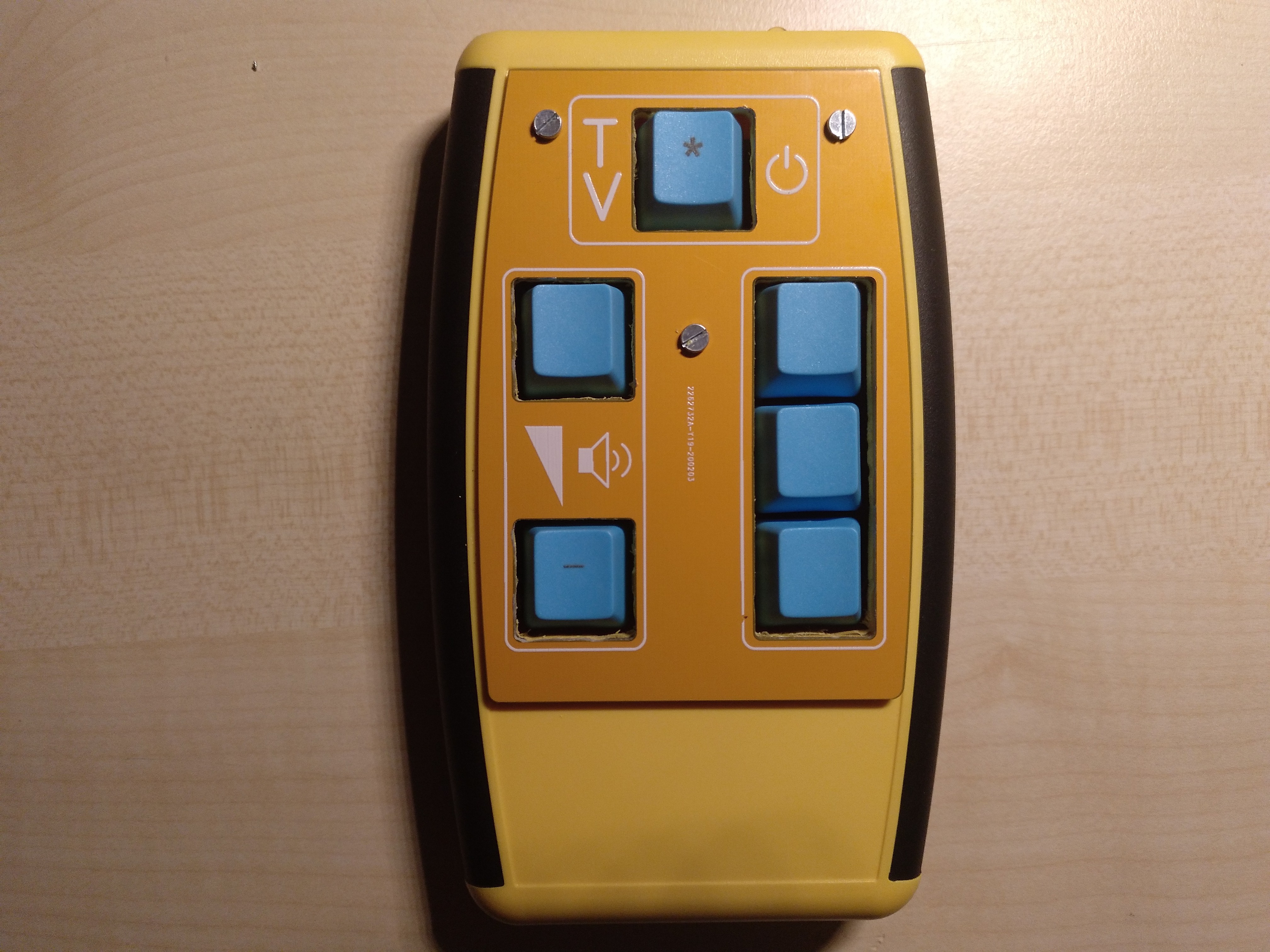
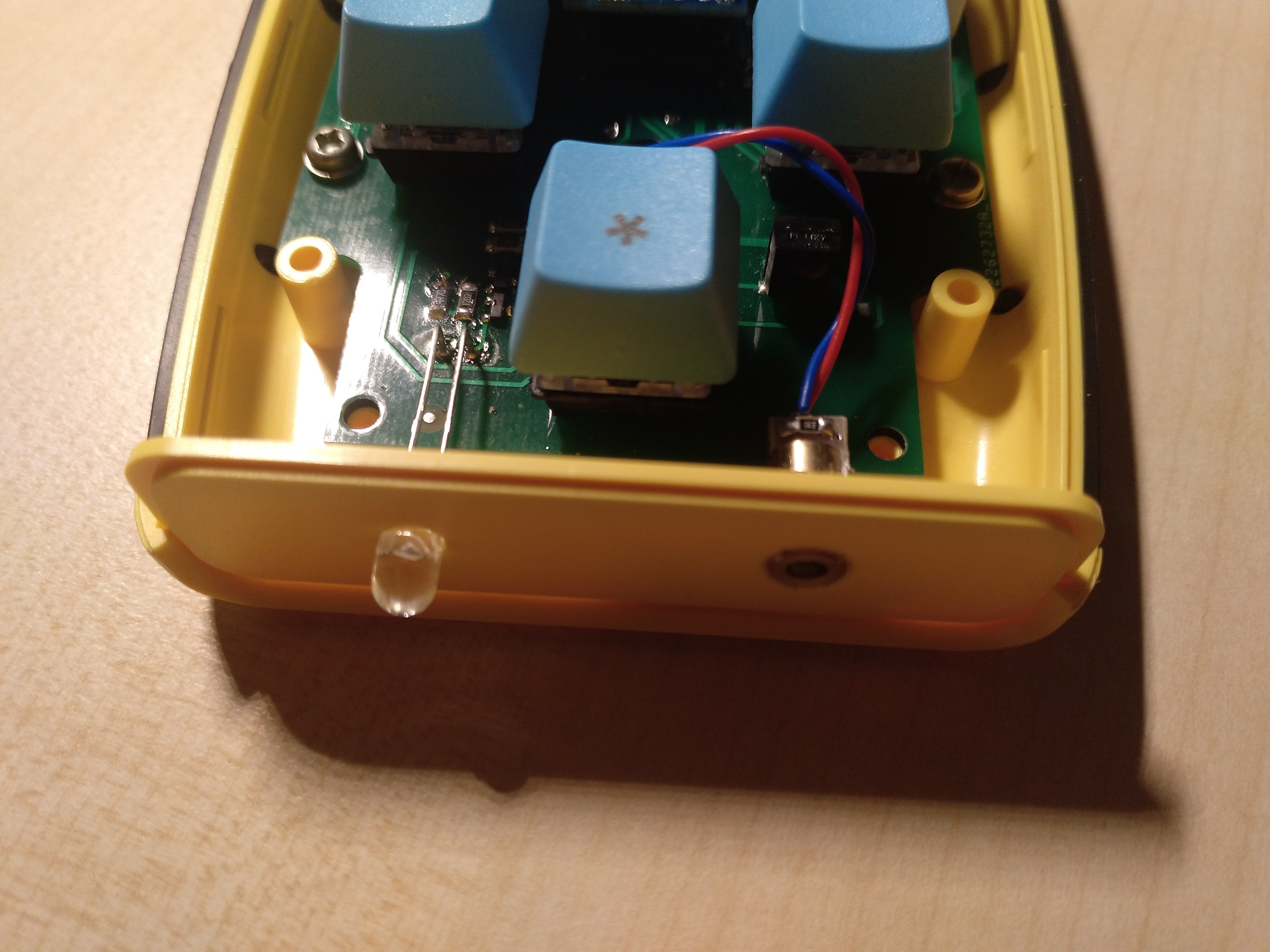
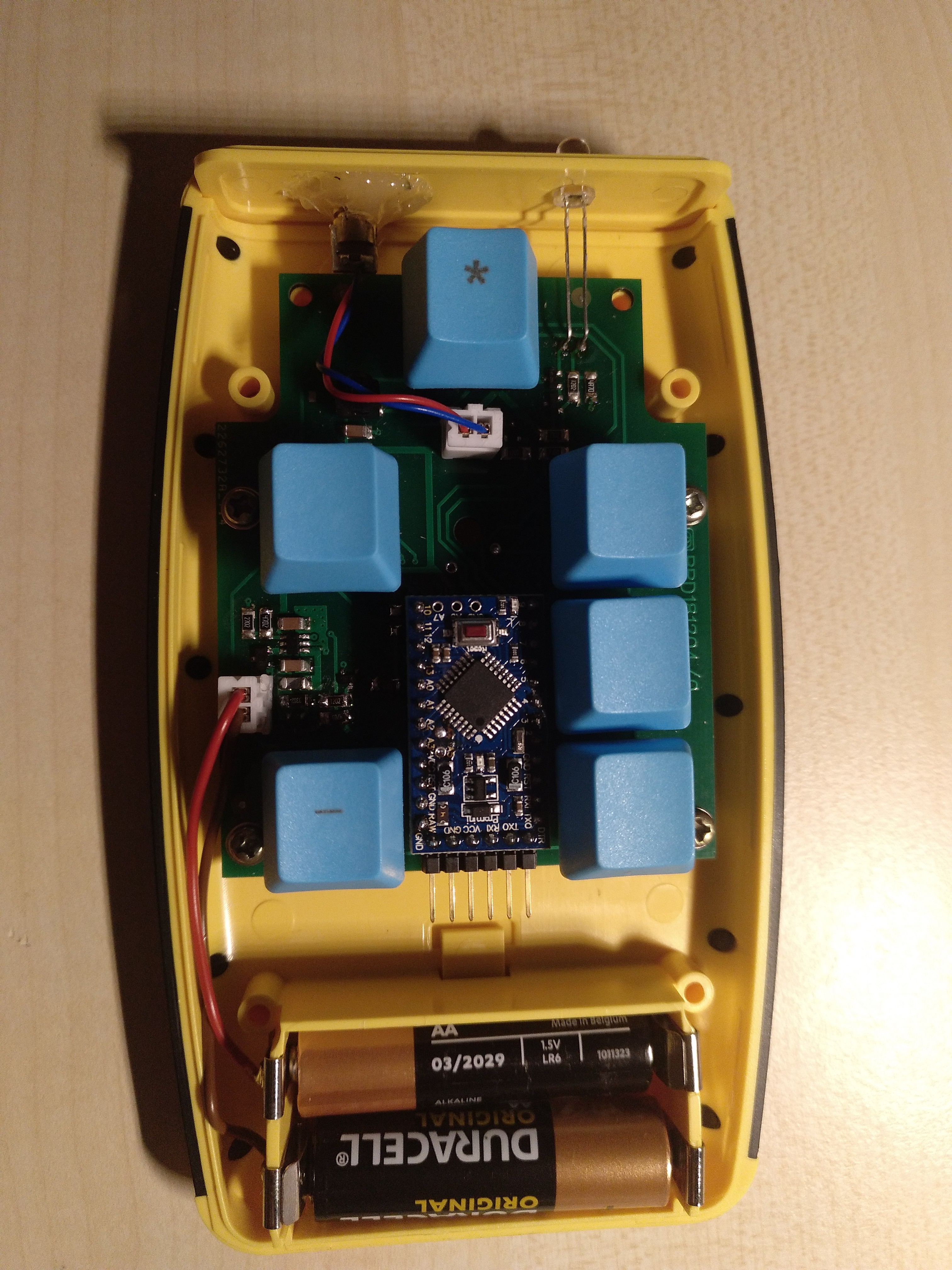
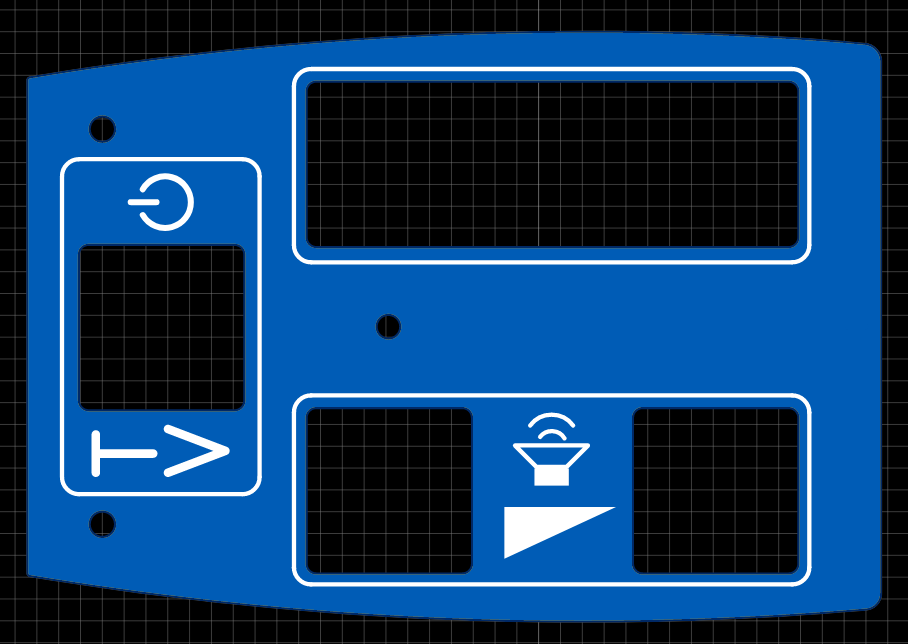
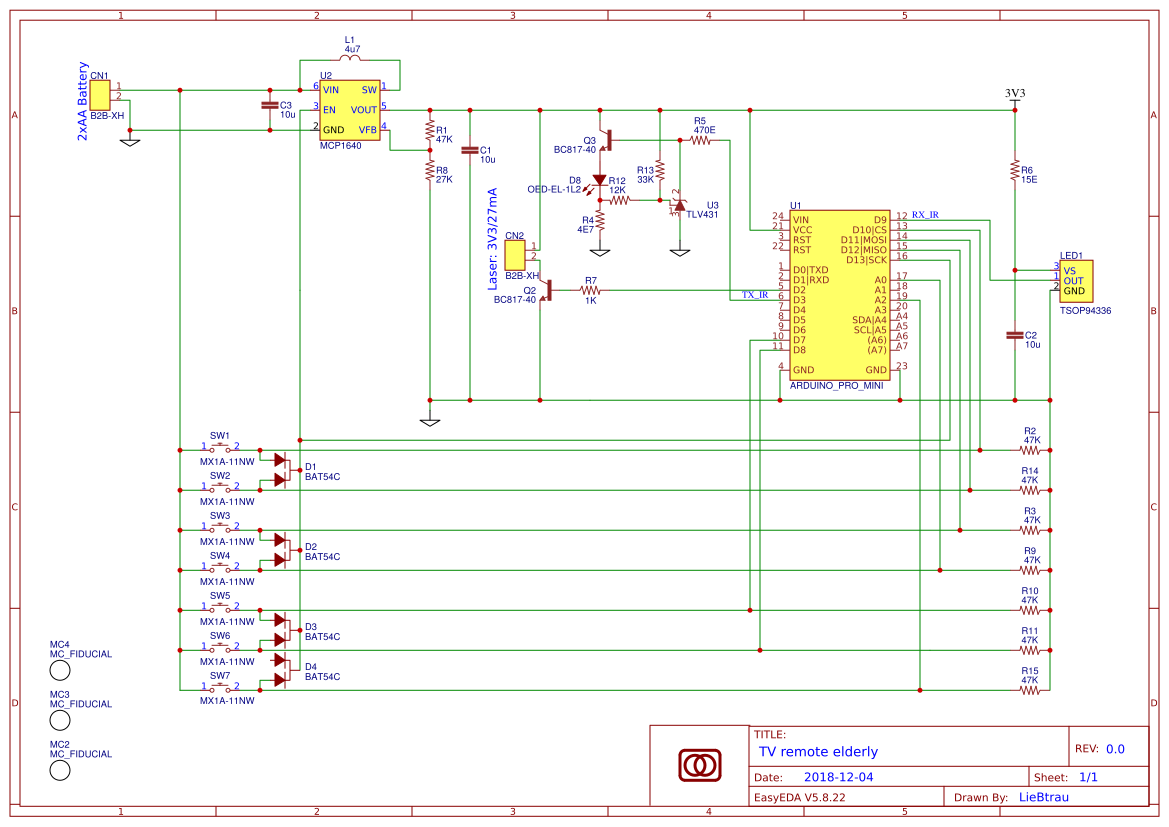
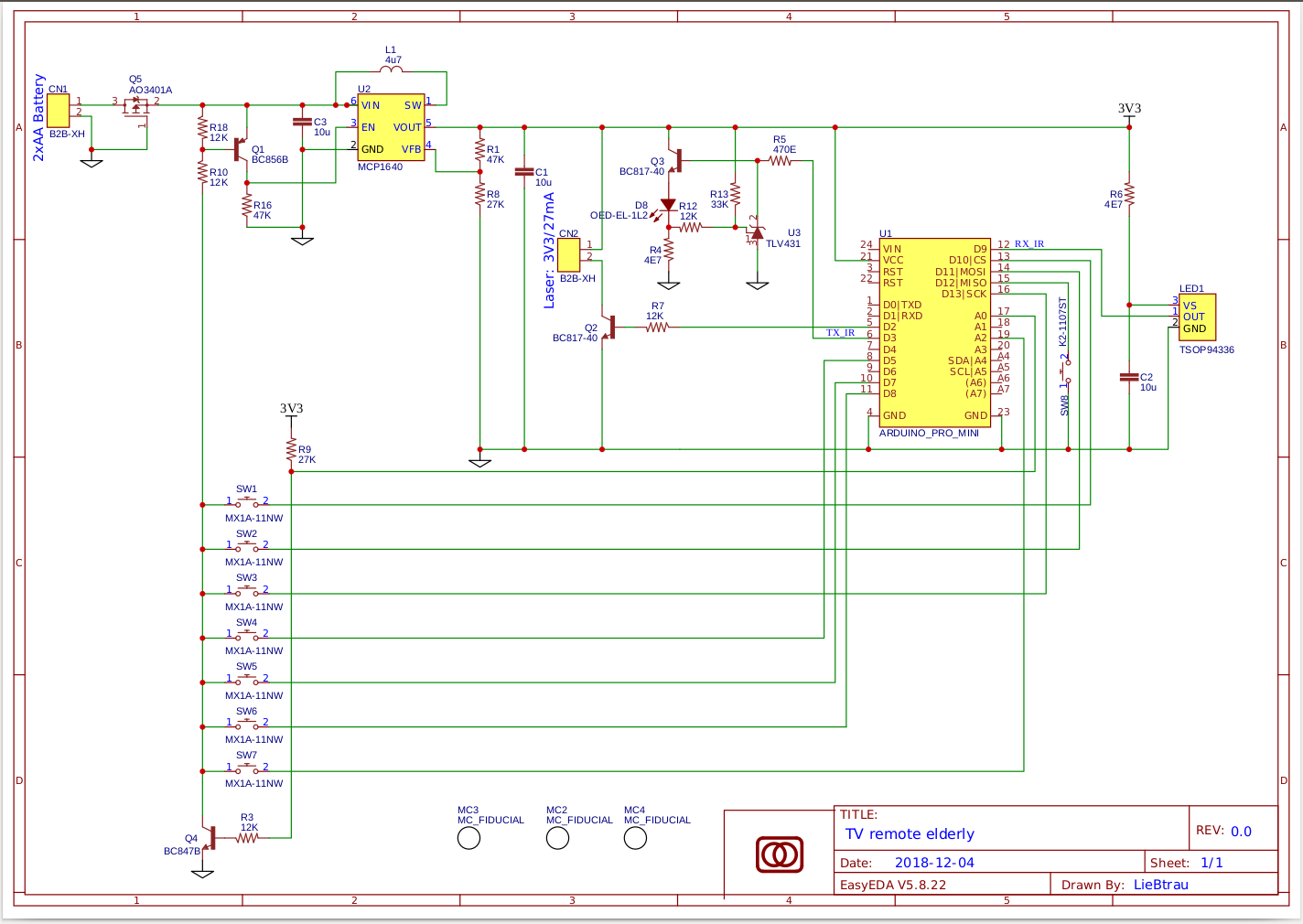
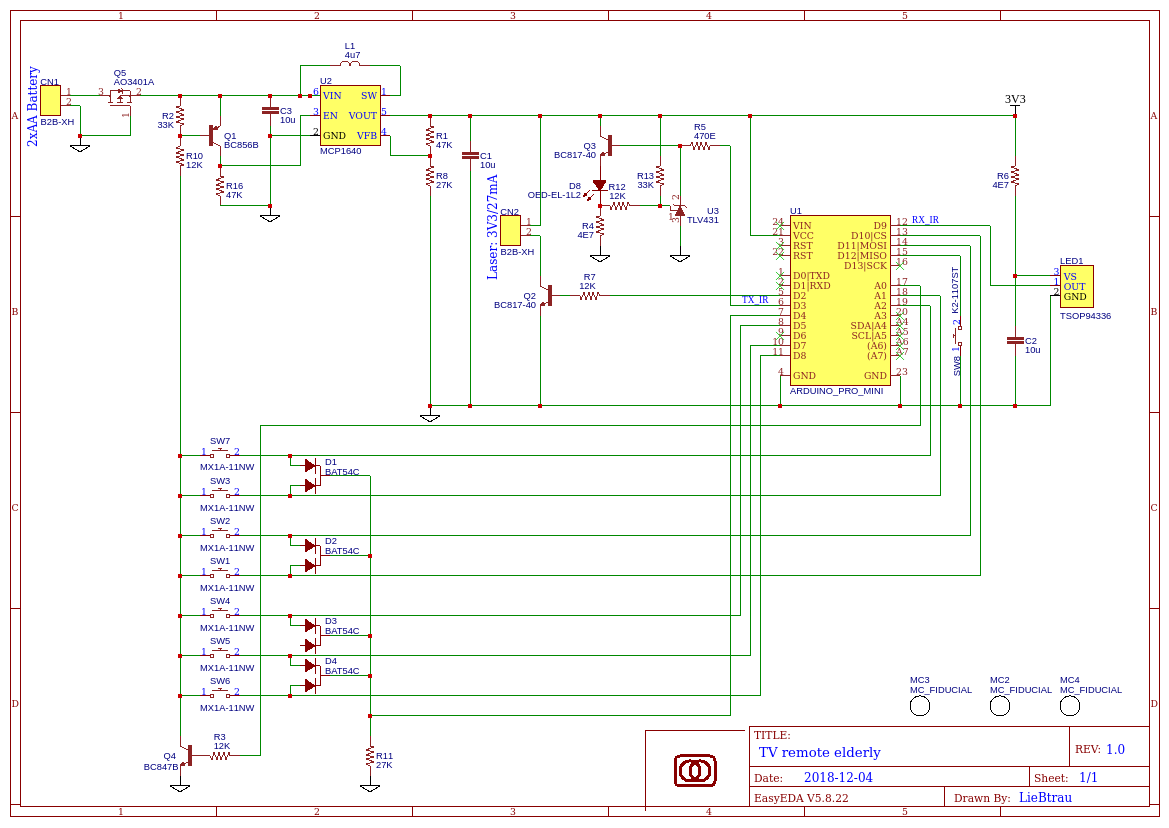









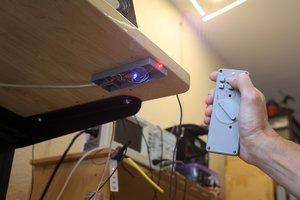
 lion mclionhead
lion mclionhead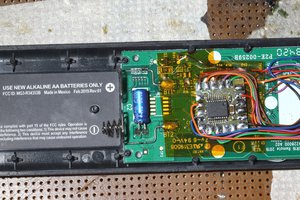
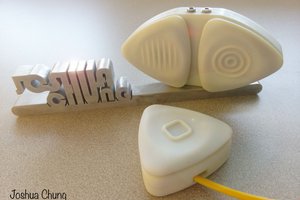
 Joshua Chung
Joshua Chung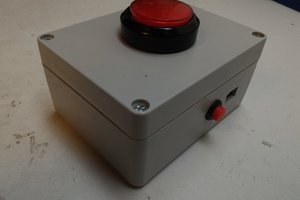
 facelessloser
facelessloser
What an impressive work you done here and I would love to share universal remote project details that is also very similar to this one.